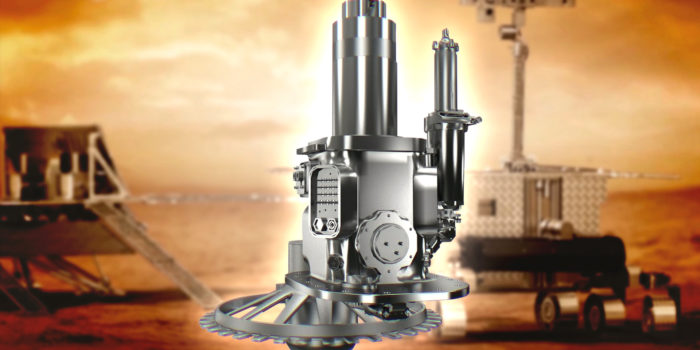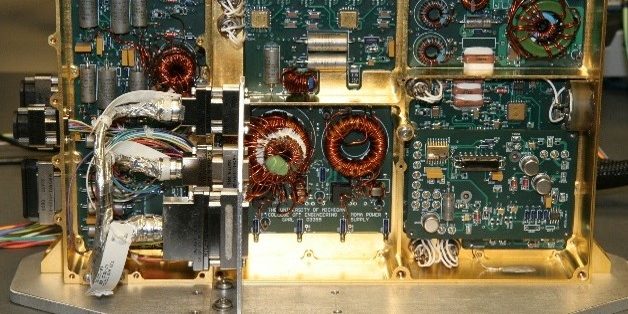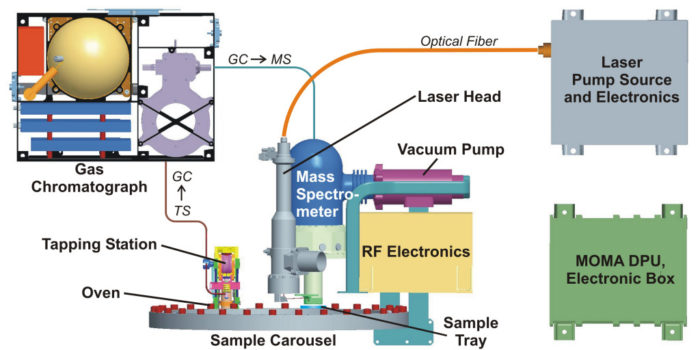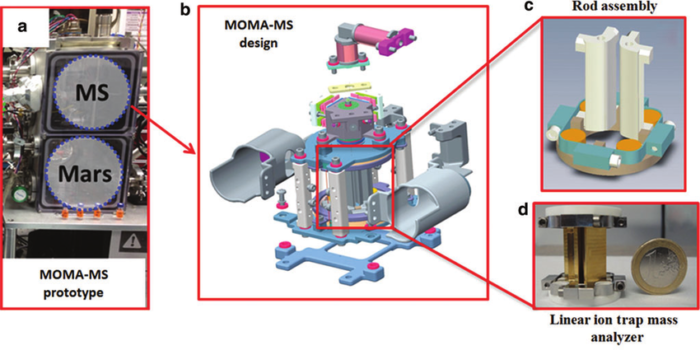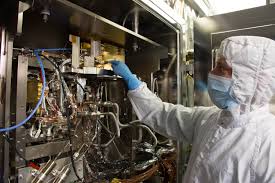Mars Organic Molecule Analyzer / Mass Spectrometer
Summary
Mission: Seeking evidence of life on Mars by characterizing a diverse selection of mostly organic compounds in martian sediments as an instrument onboard the ESA/Roscosmos ExoMars rover (to launch in July 2020)
Challenge: To analyze a wide range of volatile and refractory organic species in geological samples using Mass Spectrometry, a process which requires chemical compounds to be in a volatile state.
Solution: The Mass Spectrometer is equipped with a linear ion trap (LIT) capable of both pyrolysis gas chromatography and Mars-ambient laser desorption. It allows for filtering and identification of samples without surface preparation or processing.
Value:Through the characterization of organic molecules, and its ability to process even heat-resistant materials, MOMA-MS is a versatile tool for providing insights into the origin and processing of potential molecular biosignatures.
Lab: SPRL in cooperation with NASA
Key MOMA MS Technology:
- Linear ion trap (LIT) mass spectrometer
- Gas chromatography
- Laser desorption ionization
- Stored Waveform Inverse Fourier Transform (SWIFT)
Scientific Objective
Is there life on Mars? This is a question people have been asking since astronomers first turned their telescopes towards our red neighbor, and the idea really took hold of the public imagination in the early 1800s with purported observations of “canals” on Mars. Although there are not in fact sentient beings constructing channels and aqueducts on Mars, the search for microbial life on Mars, and evidence of past life, has been an ongoing investigation in the space science community since the first Mars rover landed in 1997. The European Space Agency’s exoMars rover will be the next progression in this search, carrying with it NASA’s MOMA– the most advanced mass spectrometer ever sent to the red planet.
MOMA will collect and volatilize organic materials through either novel ramp heating in the pyrolysis ovens or direct interrogation of the sample by intense ultraviolet (UV) laser pulses. The instrument’s multiple modes of volatilizing samples, in conjunction with the filtering of molecules through the linear ion trap, allows for a wide variety of compounds in the martian sediments to be detected and studied in unprecedented detail. This ionization method allows for detection of a broader array of heat-resistant materials while preserving weak chemical bonds that are important for molecular identification.
Another achievement of this project not to be overlooked is MOMA’s impressive size. MOMA is amazingly compact– fitting a complex lab of equipment into a housing only about the size of a toaster.
SPRL Contributions
- The Mass Spectrometer, its drive electronics, and the main electronics of MOMA (developed with partners at NASA’s Goddard Space Flight Center and Battel Engineering)

